Hulda Crooks put on her 25-pound backpack and headed out in the early morning to climb Mt. Whitney, a mountain reaching 14,505 feet (4421 m). She had climbed it 23 times before. According to reports, Hulda also claimed many other mountains, including San Gorgonio Mountain, at 11,503 feet (3506 m). She had climbed it 30 times and currently holds a record of climbing 97 peaks in total.
However, the amazing aspect of Hulda Crooks’s story is that she climbed Mt. Whitney for the first time at age 66. And she is considered to be the oldest woman to climb Mt. Fuji at age 91. As a health educator at California’s Loma Linda University, Hulda lived a very long and healthy life and died at 101 in 1997.
Ms. Crooks’ story is undoubtedly an inspiration for anyone in their senior years. And although she was a mountain climber and hiker, her message of taking on challenges later in life transfers to those of us seniors interested in snowshoeing.

The author, at 70, says, “I now snowshoe slower, I don’t go as far, and my muscles ache more. But I will continue snowshoeing.”. Photo: Jim Joque
Some of the links in this article may contain affiliate links. When a purchase is made using these links, part of the proceeds go to Snowshoe Mag. Additionally, as Amazon Associates, we earn from qualifying purchases. Please see our disclosure for more details.
Much of my active snowshoeing life started in my early 40s. But as of the first week of January 2020, I turned 70. Yikes! Where has the time gone? They say time goes by when having fun. I must have been having a blast these last few decades.
I have realized that being in my 70s does not mean I need to curtail my snowshoeing activity. However, I admit that I now snowshoe slower, I don’t go as far, and my muscles ache more.
Snowshoeing authors Sally Edwards and Melissa McKenzie say that age is not a factor in snowshoeing and writes, “If you can walk [or move], you can snowshoe.” So I will continue snowshoeing as long as I can walk and know whether I’m coming or going. And people 70 and beyond interested in the sport should also snowshoe.
Read More: Snowshoeing For Beginners: The First-Timer’s Guide
Why Seniors Should Snowshoe
What are the reasons for senior citizens to participate in snowshoeing? The 2022 Outdoor Participation Trends Report noted from their key findings that senior participants 65 and older are the fastest growing age category since the COVID pandemic.
Getting exercise was one of the key motivators, so let’s start there for reasons why seniors should snowshoe.
Exercise, Keeping Fit and Healthy
Plenty of evidence supports that a lack of exercise combined with a poor diet in older adults can contribute to obesity and various diseases. These may include diabetes, heart disease, stroke, Alzheimer’s disease, some cancers, and more.
Thus, the Centers for Disease Control and Prevention recommends more physical activity for older populations and reminds us that regular physical activity is vital for healthy aging.
The U.S. Department of Health and Human Services guidelines for older Americans recommend “150 minutes of moderate-intensity aerobic activity, 75 minutes of vigorous-intensity aerobic activity, or an equivalent combination of each per week.”
The National Institute on Aging recommends four types of exercise: endurance, strength, balance, and flexibility. They also have Go4Life videos with a personal trainer helping older adults exercise.
If an older person is looking for exercise and an aerobic workout in winter, snowshoeing is an excellent way to accomplish that objective. A leisure hike on snowshoes provides great exercise. Additionally, you can pick up the pace or walk in deeper snow until your heart rate increases. After an extended period, your trek will provide an aerobic workout.
Read More: Reap the Health Benefits of Snowshoeing
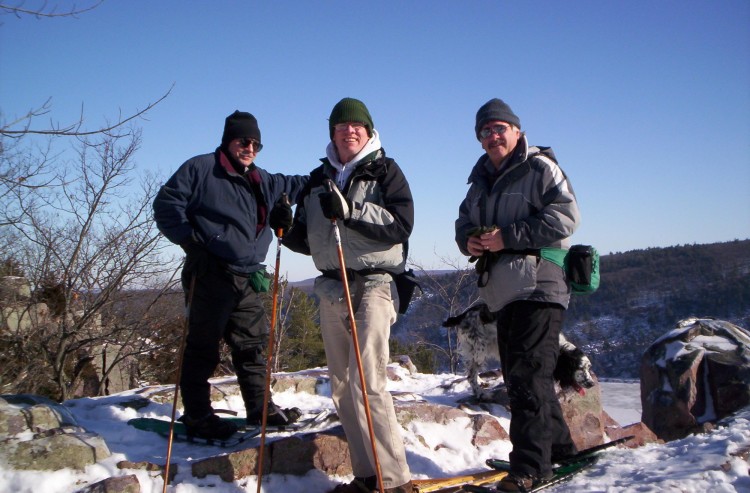
Seniors are taking a snowshoe challenge at Devils Lake State Park in central Wisconsin. Photo: Jim Joque
Something To Do Outdoors in Winter
I hear many people my age complain that they have nothing to do outdoors during winter due to the cold and snow. When I ask them if they are involved in any outdoor winter recreation, most are not. I recommend they try snowshoeing because of its simplicity, low cost, and no need to travel far.
Many areas offer places nearby to rent snowshoes, take a lesson, and hike on groomed trails. Should someone try it and like it, they can invest in a quality pair of snowshoes for around $100 to $200.
Read More: 8 Reasons Why Winter Hiking Rocks
Experience Adventure
It is an adventure whenever I put on my snowshoes and head out on a hike. Plus, a snowshoe hike in a location I’ve never visited is exciting. The planning and anticipation of the terrain, vegetation, wildlife, and challenges keep me in suspense and provide a new adventure for me to experience.
Midwest environmentalist and author Sigurd Olson once said, “When you lose the power of wonder, you’ve become old no matter how old you are. If you have the power of wonder, you’re forever young.” I don’t ever want to lose the sense of wonder. I am convinced that a sense of wonder and a desire to experience adventure will keep me forever young at heart.
Read More: Adventures To Add to Your Snowshoe Bucket List
Appreciation of Nature
Snowshoeing down a trail through a stand of conifers laden with snow enhances my aesthetic appreciation of nature. All the sights, sounds, and smells of woodlands, meadows, or mountain trails come alive when hiking on snow in winter.
My appreciation of nature became even stronger in my senior years. Time and experience taught me how to appreciate it more than when I was younger.
Read More: Outdoor Journaling: Snowshoeing Through 25 Years
Sense of Accomplishment and Self-Worth
In my 70s and retired, I look for things to do that give me a sense of accomplishment and self-worth. However, since I no longer achieve those attributes for a job well done as I once did in the workplace, I strive to find them in post-retirement challenges.
A snowshoeing challenge and writing an article to tell you, the reader, about it will do it for me. Perhaps other seniors who snowshoe may discover accomplishment and self-worth in their adventures.
Read More: How a Difficult Snowshoe Hike Makes You More Resilient
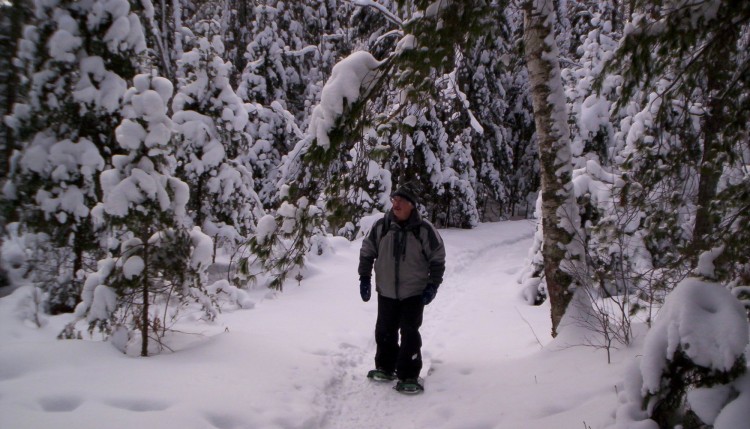
Snowshoeing through a stand of conifers laden with snow enhances an appreciation of nature. Photo: Jim Joque
Tips for Heading Out on the Trail
Now that you know why seniors should snowshoe, here are some recommendations to consider when planning to head out on the trail. First, remember that safety is a priority, and prevention is a must.
See Your Doctor First
It is proper prevention to have your physician give you a clean bill of health before heading out on snowshoes. Some people tend to overestimate their health and physical condition. Set up a time for a checkup.
Be Consistent With Your Health
As previously mentioned, physical activity is vital for healthy aging. However, sitting around waiting for snowshoe season to begin is like trying to start your car after it has sat in the garage for a long time.
Consistent activity and exercise during the 3-seasons help prepare for winter snowshoeing. Also, eat healthy, since diet is vital for keeping in shape.
Read More: Building and Maintaining Endurance for Snowshoeing
Stay Within Your Limits
Set your goals to be within your limits. Outdoor expert and author Karen Berger once wrote, “Hiking is physically challenging. And age sooner or later slows everyone down.” But, she adds, “Like any other hikers, seniors need to set mileage goals that are consistent with their stamina, personality, and fitness.”
There is no sense in taking risks by setting unrealistic goals when snowshoeing. Set a realistic pace and distance. For example, you could snowshoe about a mile in 40 minutes on a snow-packed trail since an average hiking speed on flatland is about one mile in 30 minutes.
Read More: 10 Lessons Learned from 10,000 Hours of Physical Activity
Know Your Bearings
Become familiar with where you are snowshoeing.
Keep away from high ridges, cliffs, outcroppings, and overhangs. Unlike solid earth or rock, snow can give way when not supported underneath. It is not worth the risk to snowshoe out further on a cliff for a better view or to take a picture. People have died doing so.
Also, avoid snowshoeing on frozen water, especially on creeks and rivers. Moving water does not freeze, so find an alternative route.
Read More: Safety First: Snowshoeing Hazards and How To Avoid Them
Be Prepared With a Daypack
When heading out for a day of snowshoeing, carry items in a daypack for safety and comfort. Such items include:
- First aid kit
- A compass and map
- Headlamp or flashlight
- Matches and a fire starter
- Sunglasses and sunscreen
- Knife (learn why to carry one)
- Chemical hand/body warmer (the kind you shake to heat or resealable ones)
- Compact survival blanket
- Homemade snowshoe repair kit
- Extra clothing
- Cell phone
- Food and ample water
Read More: What To Bring When Snowshoeing: Top Accessories for the Day Hiker
Bring Along Hiking Poles
Everyone can benefit from using hiking poles, especially us seniors. Poles help with balance, stability, momentum while ascending, and ease of impact on the knees when descending.
There are a few tips for choosing your pole, but I prefer my anti-shock, collapsible aluminum Komperdell hiking staff. Some friends of mine prefer using dual poles. It is all a matter of preference.
Read More: 8 Poles for Snowshoeing
Stay Safe With Winter Survival Skills
Basic winter survival skills are so necessary because you never know where your situation may lead.
Learn basic first aid. Know what to do in the event of frostbite, hypothermia, or injury. Also, learn what to do if you get lost or stranded, including building a shelter, like a quinzhee, and starting a fire. Everyone should develop these basic winter survival skills, no matter what age.
Read More: 7 Steps To Survive Outdoor Emergencies
Dress Appropriately
Finally, wear appropriate winter clothing and dress in layers. Use waterproof and breathable items, including a jacket, boots or hikers, gloves or mittens, and caps.
Keeping your hands, head, and feet warm and dressing in layers is key to having a successful and safe snowshoe outing.
Read More: Snowshoeing Dress Code: Tips for What Clothing To Wear
Go Out and Snowshoe!
The above suggestions can help make snowshoeing for people in their senior years a more enjoyable experience by being better prepared to meet the challenge. Keep in mind that you do not need an invitation to snowshoe. All that is required is the ability to move, a healthy and positive attitude, a pair of snowshoes, and snow.
For those seniors who have snowshoes, do not give them away or put them away. Instead, keep them out for this coming season. And for those who have never snowshoed before, take a lesson from Hulda Crooks, who met her first major mountain challenge at age 66. You can achieve your first snowshoe challenge now. So, snowshoe into your 70s and beyond. And perhaps, snowshoe where no one has gone before.
Are you a senior on snowshoes? What are your favorite aspects of snowshoeing, and what tips would you recommend for others? Let us know in the comments below!
This article was first published on Nov 18, 2019, and was most recently updated on Sept 29, 2022.
Read Next: Top 10 Snowshoe Tips for First-Timers

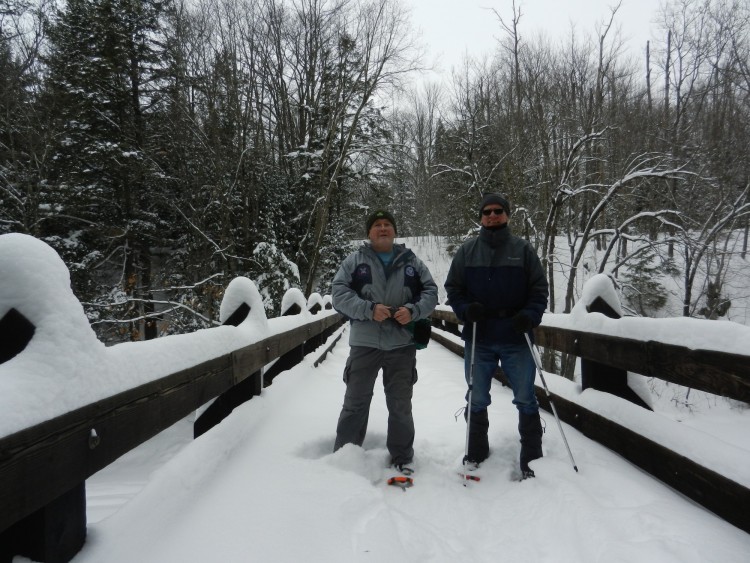

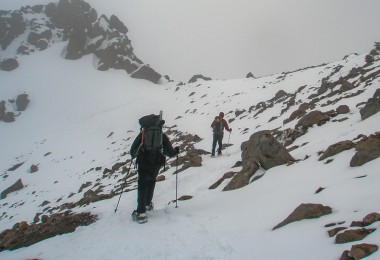
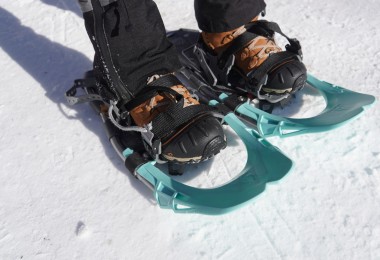
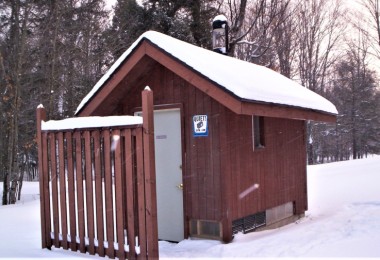
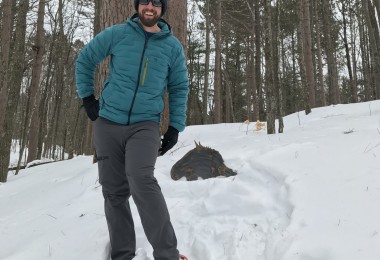

I did 2 miles the other day and it took me 75 minutes (I walk 4 mph). Last night we had a heavy snowfall — 12 inches! It took me almost 2 hours to walk the 2 miles! I’m the only one on the trail so I am definitely blazing my own trail…snow is NOT packed down! The other 3 seasons of the year I am distance cycling 5 days/week, as well as swimming when the pools are open; thus, I am pretty fit. So, what should my expectations of myself be? Today’s snowshoeing was tough! I am 67 years old.
Thank you for reaching out! I spoke to the author of the article, and he had the following recommendations: “Thank you for reading the article about us seniors snowshoeing. It sounds like you are in great shape for 67 with all that you do during the 3 seasons and what you recently accomplished snowshoeing two miles breaking trail in a foot of fresh snow. And yes, I believe it was tough since breaking trail in deep snow requires much more energy and time than snowshoeing on a groomed trail and for sure walking on a summer trail. So, your 2-mile/almost 2-hour hike makes sense given the snow conditions. I think it would take me even longer, as I’m not anywhere near in shape physically as you are…..and I’ve got 4 more years on you too. Keep snowshoeing until you can get back on your bike and in the pool.” I hope this provides some additional insight and encouragement for your future snowshoe adventures! -Susan, SSM Editor
What a great article and what great timing! I have just been in contact through e-mail with a physician candidate in Japan and a group of men that meet at the Frome Shed in the U.K. We have been discussing the benefits of keeping active in later life to improve our happiness and healthiness. The men of the Frome Shed meet on a regular basis to work on projects together. I believe that this all started with the building of a boat called a coracle. It has branched out into other projects and just having a place to meet and socialize and give them something to look forward to. The Shed idea has spread and now is becoming worldwide. I told them that I participate in endurance activities and have my whole life. I have completed approximately 75 various marathons in running, cross country skiing, snowshoeing, canoeing and biking. I feel that doing this has kept me young. My doctor has me on no medication and I am approaching 66 years of age. Since I have retired as a locomotive engineer I feel compelled to continue doing what I have done and when I have the chance to go to a Shed meeting in the future I can enjoy the companionship and projects there and spread the news of our endurance sports such as your great article just explained!
Thank you for sharing, Gary! You sure have accomplished a lot athletically/adventurously in your lifetime and currently. It’s very admirable! It’s amazing the effect that remaining active can have on our physical and mental health. The Frome Shed also sounds like a wonderful opportunity to socialize and bond with others. How neat that it has spread worldwide! To the many adventures to come…
Thank you Gary. And congrats to you, as you have done a lot of great achievements and adventures in your lifetime. With only 4 more years until 70, you should be better than ready! ……Jim